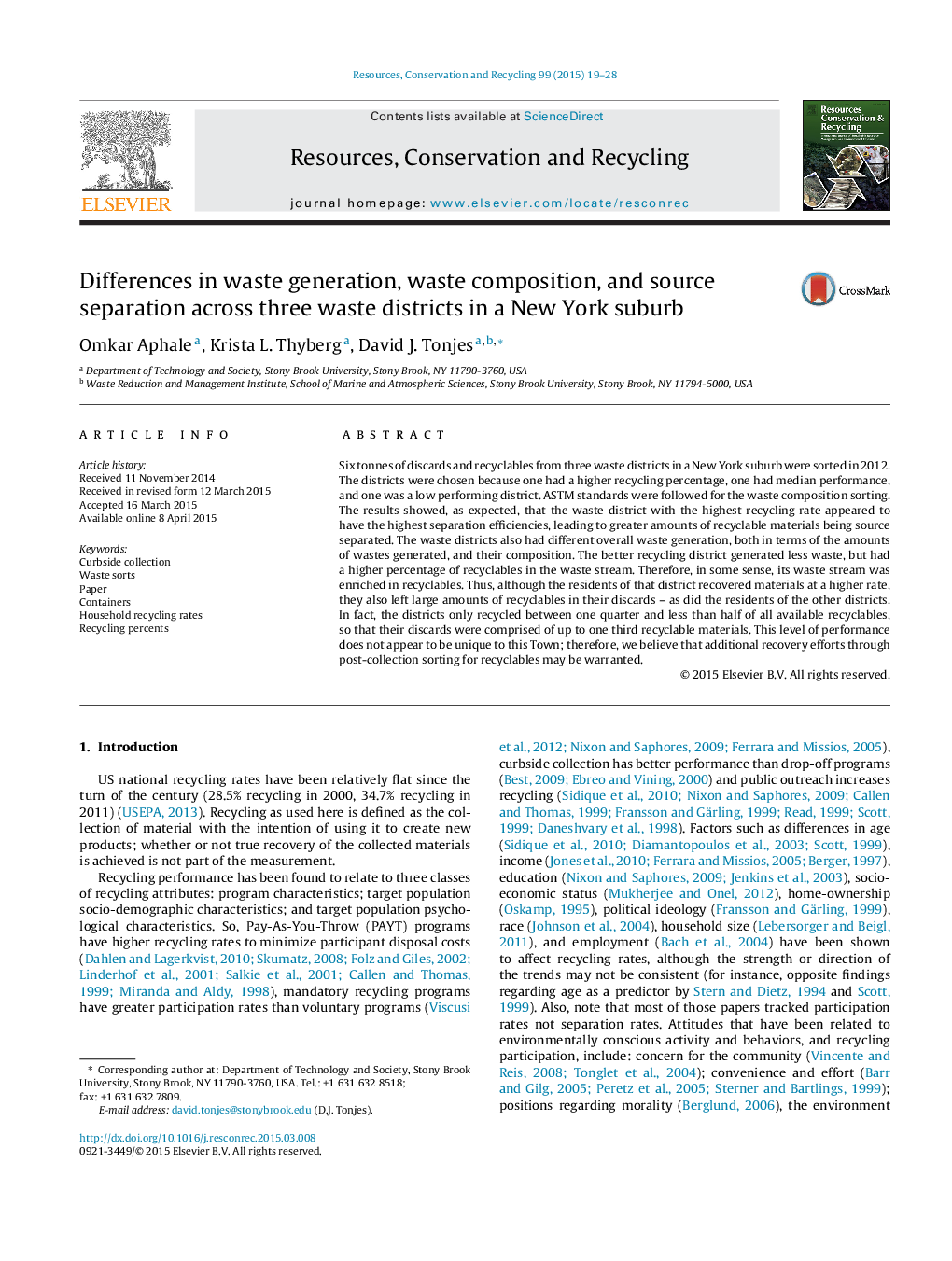| Article ID | Journal | Published Year | Pages | File Type |
|---|---|---|---|---|
| 1062790 | Resources, Conservation and Recycling | 2015 | 10 Pages |
•Waste generation rates and composition vary across waste districts.•The best recycling district had a recyclables enriched waste stream.•Better recyclers source-separate a higher percentage of available recyclables.•Large amounts of recyclables are left in the discard stream.•Better recyclers may leave as much or more recyclables in discards.
Six tonnes of discards and recyclables from three waste districts in a New York suburb were sorted in 2012. The districts were chosen because one had a higher recycling percentage, one had median performance, and one was a low performing district. ASTM standards were followed for the waste composition sorting. The results showed, as expected, that the waste district with the highest recycling rate appeared to have the highest separation efficiencies, leading to greater amounts of recyclable materials being source separated. The waste districts also had different overall waste generation, both in terms of the amounts of wastes generated, and their composition. The better recycling district generated less waste, but had a higher percentage of recyclables in the waste stream. Therefore, in some sense, its waste stream was enriched in recyclables. Thus, although the residents of that district recovered materials at a higher rate, they also left large amounts of recyclables in their discards – as did the residents of the other districts. In fact, the districts only recycled between one quarter and less than half of all available recyclables, so that their discards were comprised of up to one third recyclable materials. This level of performance does not appear to be unique to this Town; therefore, we believe that additional recovery efforts through post-collection sorting for recyclables may be warranted.
